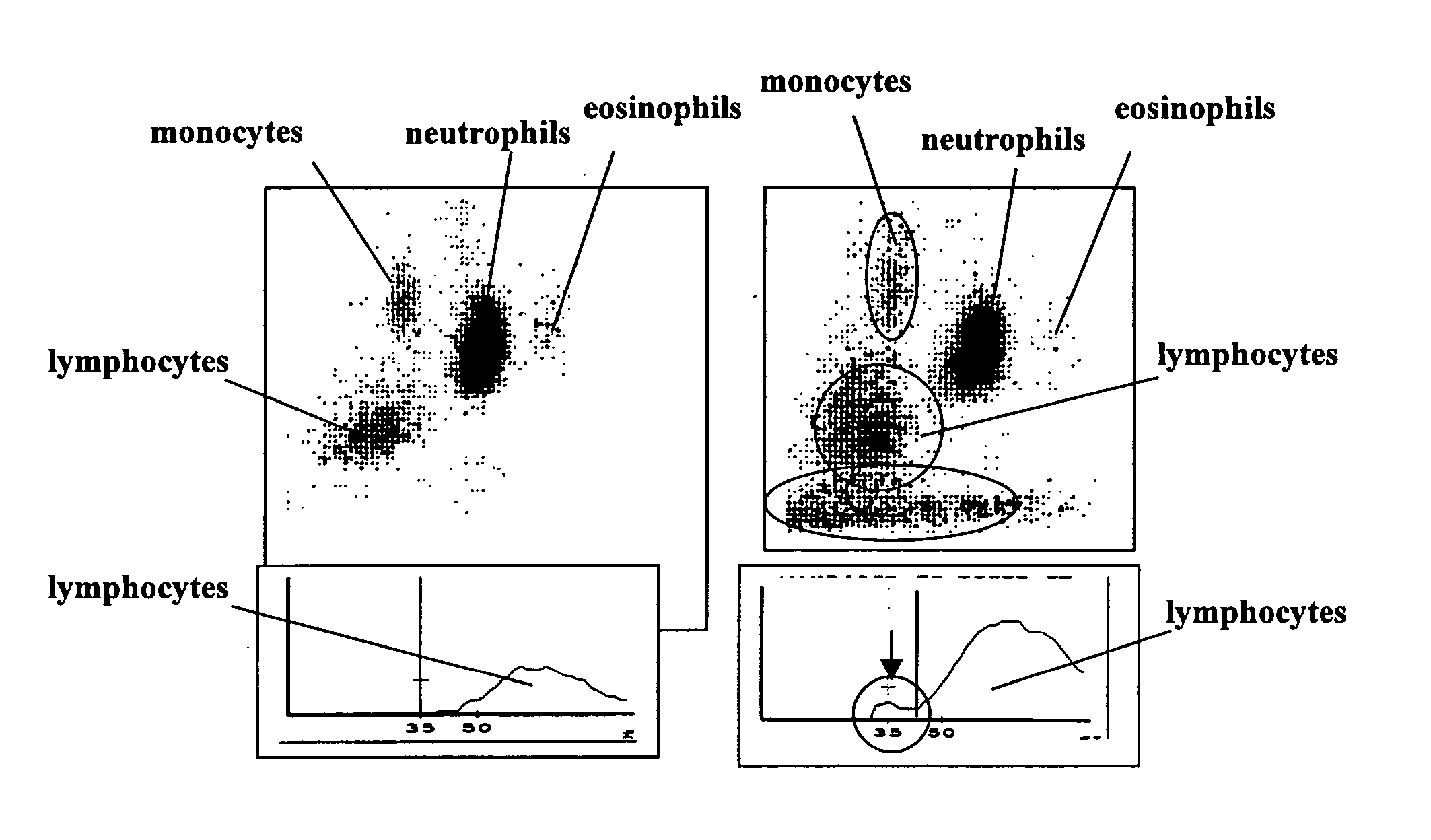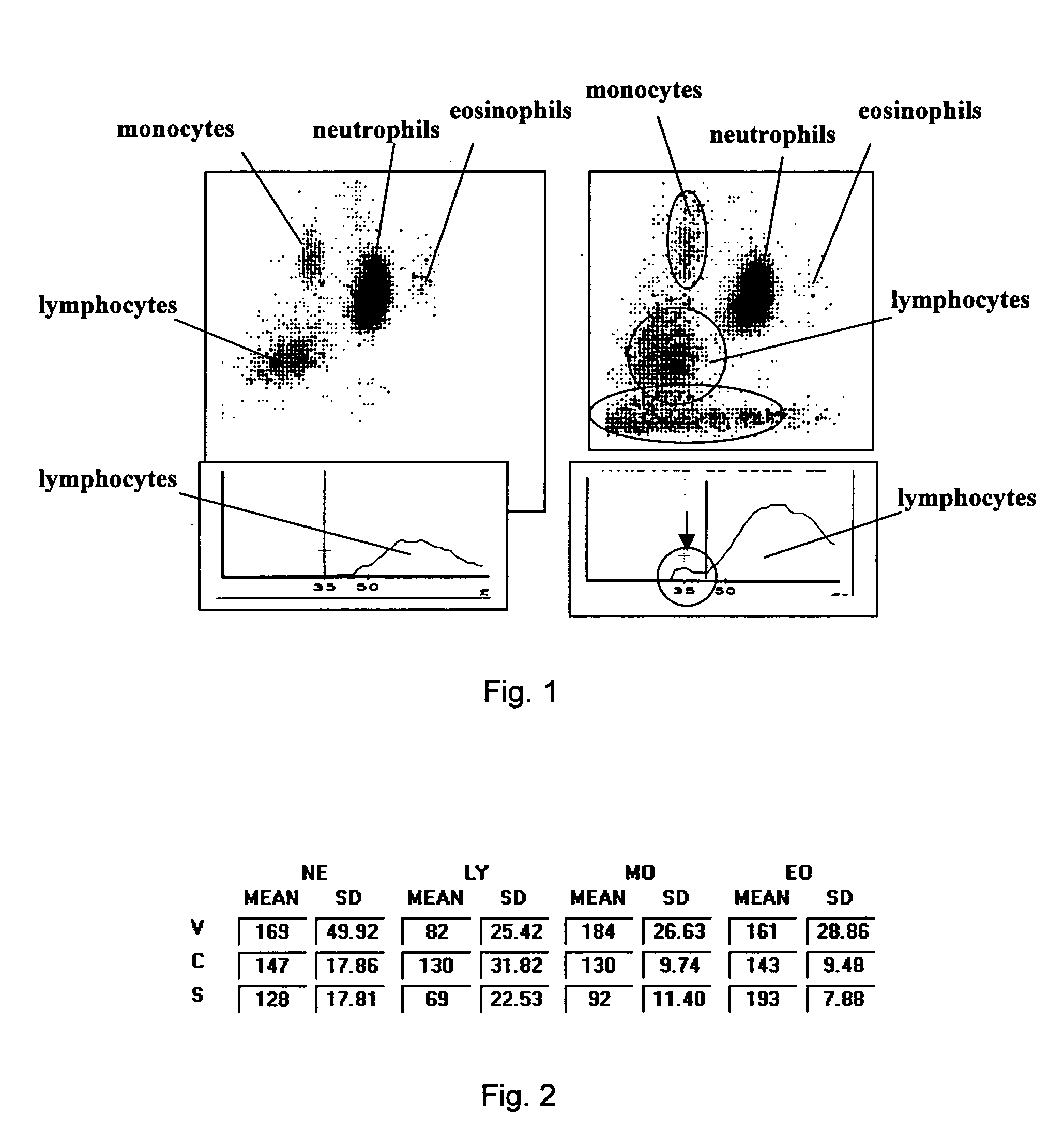Method for detection of malaria and other parasite infections
a parasite infection and malaria technology, applied in chemical methods analysis, instruments, phase/state change investigation, etc., can solve the problems of relatively poor expertise of malaria detection and identification laboratories in nonendemic areas, only undertaken investigations,
- Summary
- Abstract
- Description
- Claims
- Application Information
AI Technical Summary
Benefits of technology
Problems solved by technology
Method used
Image
Examples
example
(a) Patients
[0041] 89 clinical whole blood samples for investigations for malaria were analyzed. These samples were required for hematology analysis by physicians, on the basis of unexplained fever in patients either originating from or having traveled in endemic areas. 32 of them were recognized positive for malaria, due either to Plasmodium falciparum (28 cases) or Plasmodium vivax (4 cases). 57 were found negative by the reference method described hereinafter. The age of the patients ranged from 8 month to 72 year old.
(b) Hematology Analyzer
[0042] All samples, either malaria positive or malaria negative, were run on a Coulter GEN*S™ hematology analyzer (manufactured by Beckman Coulter, Inc., California). The hematology analyzer is herein also referred to as instrument. The hematology analyzer provides two separate white blood cell differential analyses. The first differential analysis is performed using the VCS measurement of the first sample mixture prepared by mixing a fir...
PUM
| Property | Measurement | Unit |
|---|---|---|
| time | aaaaa | aaaaa |
| temperature | aaaaa | aaaaa |
| angle | aaaaa | aaaaa |
Abstract
Description
Claims
Application Information
 Login to View More
Login to View More - R&D
- Intellectual Property
- Life Sciences
- Materials
- Tech Scout
- Unparalleled Data Quality
- Higher Quality Content
- 60% Fewer Hallucinations
Browse by: Latest US Patents, China's latest patents, Technical Efficacy Thesaurus, Application Domain, Technology Topic, Popular Technical Reports.
© 2025 PatSnap. All rights reserved.Legal|Privacy policy|Modern Slavery Act Transparency Statement|Sitemap|About US| Contact US: help@patsnap.com



